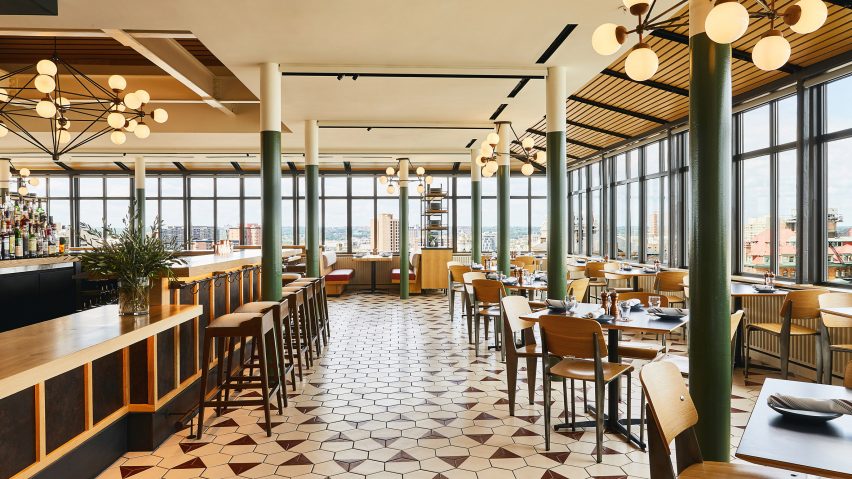US studio SL Design has overhauled the interiors of a 20th-century building in Baltimore, Maryland to create this boutique hotel, including a 1970s-style lounge, modernist designs and a curated art collection.
Hotel Revival is located in Baltimore's historic Mount Vernon neighbourhood, in an existing structure that is nearly 100 years old.
Formerly the Peabody Court Hotel, the property was recently transformed into the 14-story boutique hotel. Interiors were designed by Chris Sheffield of SL Design, while his friend Sara McCorriston from Paradigm Gallery led the art direction.
Local firm Schamu Machowski + Patterson Architects was project architect.
Hotel Revival comprises 107 rooms, two restaurants, a karaoke lounge. It is also intended to serve as a community gathering place, with the inclusion of a local art programme.
This chimes in with the previous use of the building, which was once a private mansion for an art-enthusiast and also the site of the Baltimore Museum of Art's inaugural exhibition in 1923.
"[Hotel Revival] boasts a rich past rooted in art," said the statement. "With this in mind, Revival's team wanted to celebrate the area’s heritage, as well as make art and culture more accessible to all who experience the hotel."
A feature of Hotel Revival is a rooftop bar and eatery, called Topside, which is surrounded by windows and filled with green-painted pillars.
Sheffield chose various vintage furnishings to fill the space, geometric floors tiles to match geometric globe light fixtures, and dozens of plants and floral prints.
The dining area is decorated with chairs featuring veneered plywood seats and steel legs, modelled on those first designed by French modernist Jean Prouvé.
Decor in the lounge, meanwhile, is moodier, with dark wood ceilings and an exposed brick wall. A dark leather couch and chairs and woven coffee tables and stools provide the furnishings, and are evocative of the 1970s.
On the ground floor is a more traditional-style lobby, reflecting Baltimore's history as a southern city.
Wallpaper with a sky-blue design is paired with dental crown moulding. Pale wood floors are in a woven parquet pattern.
This more traditional style is continued in the hotel rooms, which feature navy walls and floral prints across window curtains, wallpaper and textiles.
To link to the rest of the hotel's eclectic interiors, hotel rooms have a range of furniture styles with leather and wood elements evocative of mid-century designs. Floors are covered in either dark wood or blue-and-white carpeting.
Some king-bed suites have custom quilts embroidered with a map of Chesapeake Bay, an estuary in Maryland and Virginia.
Finishing off the guest rooms are art pieces that McCorriston selected to be unique to each room.
McCorriston and Sheffield were both based in Philadelphia at the time of the project. After 13 years in the city, Sheffield has since closed his studio SL Design and moved to Venice Beach, California.
Baltimore is in the northeast corridor of the US and close to a range of major cities, particularly Philadelphia and Washington DC.
Another project in Maryland is The Pavilions at Glenstone Museum by Thomas Phifer. Located more inland in the city of Potomac, the project is a one-hour drive from either Baltimore or Washington DC.
Last year, another hotel opened in the US capitol for Eaton, featuring interiors by Gachot Studios and Parts and Labor Design.
Photography courtesy of Two Roads Hospitality.

